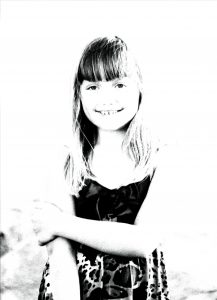“Sasha, no you can’t go over to Leah’s for a sleepover. We are quarantined and I’m sure you can find some fun things to do without endangering yourself or the rest of the family.”
I knew my mom was right. As of today, the coronavirus has already claimed the lives of almost 20,000 people around the world. Even if we don’t return to school and have to work at home online, I know I will still have to turn in my history assignment. I have an idea! If I can’t go out now and play with my friends, and if I have to finish my assignment, why not go back in time years before the coronavirus ever existed and gather information from truly “primary sources?”
No one in Coronado knows that my dad was involved in a lot of top secret projects when he was in the military. While some people like to restore old cars in their spare time, my dad has spent the last ten years working in the evening in his workshop on a time machine. I know that sounds crazy to some people, but I wouldn’t believe it myself had he not taken me back in time to 1968 when they were building the Coronado Bridge.
One time when we went to the Hotel del Coronado to look at their Christmas tree, I can remember seeing old black and white photographs of the hotel under construction and of Tent City that drew many visitors to Coronado who could not afford to stay at the remarkable hotel. Those photos moved me to choose Tent City as the topic for my history assignment.
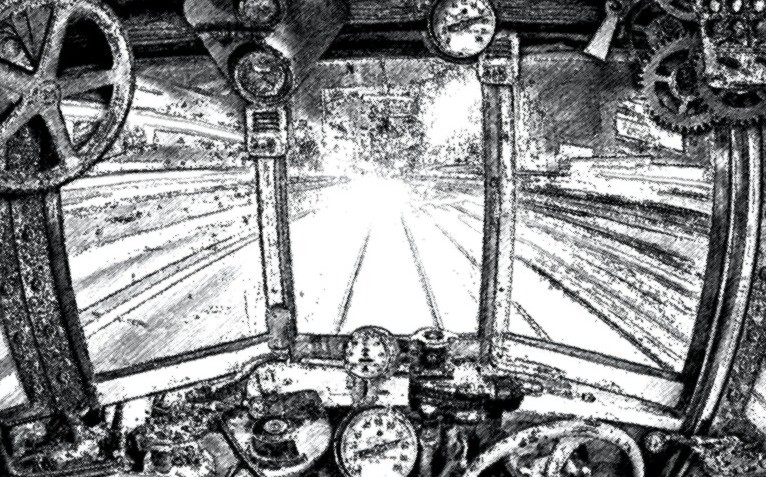 Insofar as Tent City was in existence from 1900 until 1939, I set the dials on my dad’s machine for July 1, 1910. Because things cost much less in 1910 than they do today, I thought the $17.37 I had on hand would easily cover my expenses.
Insofar as Tent City was in existence from 1900 until 1939, I set the dials on my dad’s machine for July 1, 1910. Because things cost much less in 1910 than they do today, I thought the $17.37 I had on hand would easily cover my expenses.
By setting the dials on the machine to return at the very time I departed, I thought my dad would have no idea I used his invention. I hoped the machine would work for me as it did for us earlier and I would not end up in prehistoric times only to be eaten by a Tyrannosaurus Rex. After pushing all the right buttons, I closed my eyes and prayed for the best.
I heard a whoosh sound and I started feeling dizzy. When I opened my eyes, I found myself in some sand dunes. All the homes in my neighborhood were gone and I could see North Island in the distance that was not connected to Coronado. It would not be until 1944 when the Army Corps of Engineers would fill in the area between the peninsula of Coronado and North Island.
As I turned and faced South, I knew that dad’s machine worked as I saw the top of the Hotel del Coronado less than a mile away. Having been completed in 1888 at a cost of $1,000,000 with labor provided by some 2,000 Chinese immigrants, the Victorian-style hotel would have been only 22 years old in 1910.
I decided the best route to Tent City that was just south of the Hotel del Coronado would be to walk along the ocean beach. It was not long before I came across some people who were playing in the sand and swimming. What funny swim suits they were wearing! The boys wore swim suits that were very much like the girls’ swim suits that covered their upper bodies and went down almost to their knees. Because I packed my bikini bathing suit, I knew I would have to find a store that sold swim suits if I decided to go swimming during my visit.
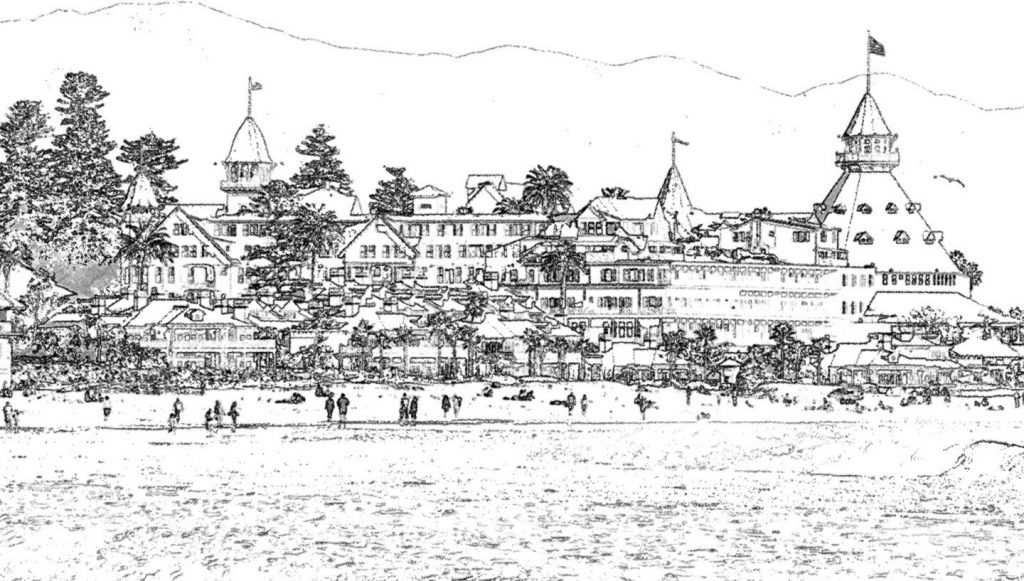 The farther I walked, the more crowded the beach became until I finally reached the Hotel del Coronado. Because our teacher encouraged us to get help in writing our essays by speaking with some people who have lived in Coronado a long time, I thought the best person I could interview during my visit would be John D. Spreckels, the proprietor of the Hotel del Coronado whose idea it was to develop Tent City. Having read that he built a mansion on Glorietta Boulevard across the street from the Hotel del Coronado that in my day was the Glorietta Bay Inn, I walked around the hotel, crossed the street, and knocked on his door. Although I am a rather shy person especially when it comes to talking with adults I don’t know, I thought I would now have to act more like my twin brother, Luke, who is very outgoing and will speak with almost anyone he meets.
The farther I walked, the more crowded the beach became until I finally reached the Hotel del Coronado. Because our teacher encouraged us to get help in writing our essays by speaking with some people who have lived in Coronado a long time, I thought the best person I could interview during my visit would be John D. Spreckels, the proprietor of the Hotel del Coronado whose idea it was to develop Tent City. Having read that he built a mansion on Glorietta Boulevard across the street from the Hotel del Coronado that in my day was the Glorietta Bay Inn, I walked around the hotel, crossed the street, and knocked on his door. Although I am a rather shy person especially when it comes to talking with adults I don’t know, I thought I would now have to act more like my twin brother, Luke, who is very outgoing and will speak with almost anyone he meets.
When a man came to the door and asked what I wanted, I told him I wanted to speak with Mr. Spreckels. He informed me that Mr. Spreckels was not at home and if I wanted to speak with him I would have to request an appointment through his personal secretary. Before I had a chance to ask where I could reach his personal secretary, he closed the door leading me to conclude that if I was going to meet Mr. Spreckels, it was not going to be at his home.
Because it was a hot day, I thought I’d look for a place where I could get something to drink and work on a plan on how I could find and meet Mr. Spreckels. I could see Tent City just south of the hotel and was sure they sold food and drinks there. Although there were no cars or trucks, I was excited when I saw a trolley that rode on tracks in the street. I later learned that it ran between Tent City and the Ferry Landing on the bay overlooking San Diego.
As I walked through Tent City that had grown since 1900 from 300 to 1,000 tents, I came across a girl who appeared to be my age who was drinking water from the large barrel. Because I was really thirsty, I asked her if I could use her cup and get a drink of water.
When she gave me her cup and I took a drink, I said, “Wow! This water is cold. How can that be?”
She said they come by daily and fill the barrels up with ice. When I asked her where she lived, she pointed to a tent. She seemed to think that I was also vacationing with my family somewhere in Tent City.
“What’s your name?” I asked.
“Mary” she said. She then asked, “Would you like to go with me to the pool?”
I said, “I would love to, but I don’t have a bathing suit.” I didn’t think it was a good idea to show her the bikini I packed in my small bag. It might be hard to explain and I certainly didn’t want to talk about my journey back from the future.
“No problem,” Mary said. “I have an extra one that should fit you.”
After changing we made our way to the pool that appeared to be located in the same place where I took swimming lessons at the Coronado Community Pool. Mary said that people referred to the pool as “John Spreckels’ Bathtub.” That probably was not a bad name because the pool was no more than 3 feet deep. Unlike the Community Pool in my day, this pool had a slide that I ended up riding down many times.
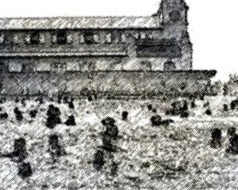 After spending just a little over an hour at the pool, we walked back to Mary’s tent passing by a large Pavilion where a concert was being performed. Mary said that the concerts were free and were held at 3:00 p.m. and 8:00 p.m. daily.
After spending just a little over an hour at the pool, we walked back to Mary’s tent passing by a large Pavilion where a concert was being performed. Mary said that the concerts were free and were held at 3:00 p.m. and 8:00 p.m. daily.
When we got back to her tent and we changed into our play clothes, I asked Mary how expensive it was to stay in Tent City. Mary walked over to a small table and underneath a copy of the Coronado Tent City News was a price list that Mary’s parents were given upon their arrival. It noted that tents came both unfurnished and furnished. Furnished tents included beds, bedding, tables, a washstand, necessary cooking utensils, rocking chairs, folding chairs, camp chairs, a lamp, clean linen, towels, and daily laundry of tent linen. The cost of living in a furnished tent was $.50 a night for one person; $1.00 for 2 people; and $2.00 per week for each additional person. An unfurnished tent without a floor went for as little as $4.50 a month. Electric lights were extra at a cost of $1.00 a month.
Mary asked me if I had a chance to ride on the Merry-Go-Round since my arrival. When I said I hadn’t, she suggested we go for a ride. On our way, we passed by a shooting gallery, a theater, a grocery store, a soda fountain, and some shops. I couldn’t get over how many cool things there were to see and do in Tent City.
Along the way we met a policeman who wore a funny looking uniform. While he had club attached to his belt, I didn’t see a gun. When I asked Mary if there were many police men or women in Coronado, who looked at me funny and said, “Who ever heard of a woman copper?” She went on to say that there was only one policeman for all of Tent City. She said that he carries two sets of cards. One set reads, “Please be quiet.” And the other set reads, “Please keep the children quiet.” She knew that because one night when she was making too much noise the policeman stopped by her parents’ tent and gave her father one of those cards.
 When we got to the Merry-Go-Round, I couldn’t believe that it only cost 1¢ to ride. I dug into my bag and got two pennies without Mary seeing the remaining $17.35. I didn’t want her to think that I was a rich kid or a thief. After riding the Merry-Go-Round, I offered to buy Mary something to drink at the soda fountain. We ordered Coca Cola that was served in large glasses and the bill came to a total of 6¢.
When we got to the Merry-Go-Round, I couldn’t believe that it only cost 1¢ to ride. I dug into my bag and got two pennies without Mary seeing the remaining $17.35. I didn’t want her to think that I was a rich kid or a thief. After riding the Merry-Go-Round, I offered to buy Mary something to drink at the soda fountain. We ordered Coca Cola that was served in large glasses and the bill came to a total of 6¢.
Because we still had over an hour before Mary was expected for supper, I asked Mary if I could treat her to a ride on the trolley. Mary had ridden the trolley when she arrived with her parents on a train that let them off at the train station in San Diego. They rode the “Silver Gate Ferry” across San Diego Bay and took the trolley from the ferry landing to Tent City. The trolley proceeded down the middle of Orange Avenue which years later was filled in with trees when people drove cars and the trolley service was discontinued.
When we arrived at the ferry landing, there appeared to be a bit of excitement. When we asked what was happening, we learned that Mr. John D. Spreckels had just finished giving a patriotic speech in anticipation of the upcoming 4th of July celebration. When people were waving small flags, I couldn’t help but notice that some stars appeared to be missing. When I counted the stars, I discovered that there were only 46. Had I been a better U.S. History student, I would have realized that in 1910 New Mexico, Arizona, Alaska and Hawaii had not yet been granted statehood.
While I knew it wouldn’t be possible for me to be able to sit down and talk with Mr. Spreckels about his life and accomplishments, I decided it would be neat if I could at least get his autograph. I grabbed Mary’s hand and we weaved our way through the crowd. Just as Mr. Spreckels was about to depart with a group of men who had accompanied him to the event, I forced my way to the front and shouted, “Mr. Spreckels, may I have your autograph?”
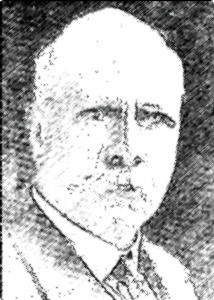 Just as some people were about to shoo me away, Mr. Spreckels stopped them, looked me in the eye, and inquired, “Little girl, what’s your name?”
Just as some people were about to shoo me away, Mr. Spreckels stopped them, looked me in the eye, and inquired, “Little girl, what’s your name?”
I said, “I’m Sasha.”
He then said, “I don’t think I ever met a girl called Sasha before. That’s a pretty name.” He then asked, “How old are you Sasha?”
I said, “I’m eight years old.”
He said, “Well, Sasha, what would you like me to sign?”
I said, “How about if you signed that newspaper you’re carrying?” It was the Friday, July 1, 1910 edition of the San Diego Union. Mr. Spreckels owned the Union-Tribune Publishing Company that published the San Diego Union he purchased in 1890 and the San Diego Tribune he bought in 1901.
As he was signing the front page of the newspaper, he asked me if I lived across the bay in San Diego or if I was visiting Coronado with family. I told him I was visiting Tent City and complimented him for developing it so that people who could not afford to stay at the Hotel del Coronado could still enjoy the beauty and the attractions that Coronado provided.
Because he did not expect to hear that from an eight year old girl, he was taken aback a little and simply said, “Sasha, thank you for that kind compliment. Initially I was afraid developing Tent City was a mistake, but it seems to have worked out quite nicely. I do hope you enjoy your visit.”
I shook his hand, put the autographed newspaper in my bag, and made my way back on the trolley to Tent City with Mary. We got back just as Mary’s parents were getting ready to have dinner. Because they assumed I would be having dinner with my family in Tent City, I bid them farewell and started walking back to the time machine that I had to get to before it got dark.
As I was walking back, I couldn’t help but wonder what would happen if dad’s machine didn’t work and I couldn’t make it back to the future? Where would I live? What would I do?
I found the time machine that appeared to be intact and undisturbed. I set the dials for the exact date and time of my departure and again prayed that I would soon be reunited with my family.
When I hit the start button, the lights on the machine started flashing and it didn’t seem but a moment later that I found myself back in my dad’s workshop. When my brother walked into the work shop and saw me sitting in the machine, he yelled, “Dad’s gonna ground you if he finds you playing around his invention.”
Fortunately, he never knew that I had tested out dad’s machine and he never told dad he caught me sitting in it. I returned to my bedroom; opened up my bag; and withdrew the copy of the San Diego Union signed by none other than John D. Spreckels.
Most people would think that I came across the signed newspaper at an estate sale in Coronado. The only people who know the truth, however, are no longer around. Mr. Spreckels died in 1926 at the age of 72 and Mary would be 118 years old if she were alive today.
Years from now when people ask me what I did to keep busy while quarantined during the coronavirus, I think I’ll tell them I just read old newspapers and did research on Tent City. The question is, “Should I go for a spin again?” What do you think?
By Gene Gomulka




